10 Best Herbs To Grow On Your Porch For Fresh Flavors
Bring fresh flavor to your doorstep with these 10 best herbs to grow on your porch. From basil and mint to rosemary and thyme, these easy-to-grow herbs thrive in pots and small spaces. Enjoy aromatic greenery, quick harvests, and year-round seasoning right outside your door with minimal maintenance and maximum freshness.
How to Set Your Porch Up for Herb Success
Before we dive into the tasty plants, set the stage. Most herbs love 6–8 hours of sun, good airflow, and well-draining soil.
If your porch leans shady, no worries—some herbs thrive in less light.
- Use pots with drainage holes. Soggy roots = sad herbs.
- Choose a quality potting mix. Add perlite for extra drainage and a bit of compost for nutrients.
- Water when the top inch of soil feels dry. You’ll water more in heat and wind.
- Snip regularly. You’ll get bushier plants and more flavor. It’s basically free seasoning.
Herbs That Love Sunshine
Got a bright porch? These sun worshipers will thrive and make your kitchen smell like a dream.
Basil

Basil = the porch MVP.
It grows fast, tastes like summer, and pairs with literally everything from tomatoes to peaches. Keep it warm, give it sun, and pinch off any flowers to keep leaves sweet.
- Water: Consistent moisture, but don’t waterlog it.
- Pro tip: Harvest from the top, just above a leaf pair, to encourage branching.
- Varieties to try: Genovese (classic), Thai (peppery), Lemon (bright and citrusy).
Rosemary
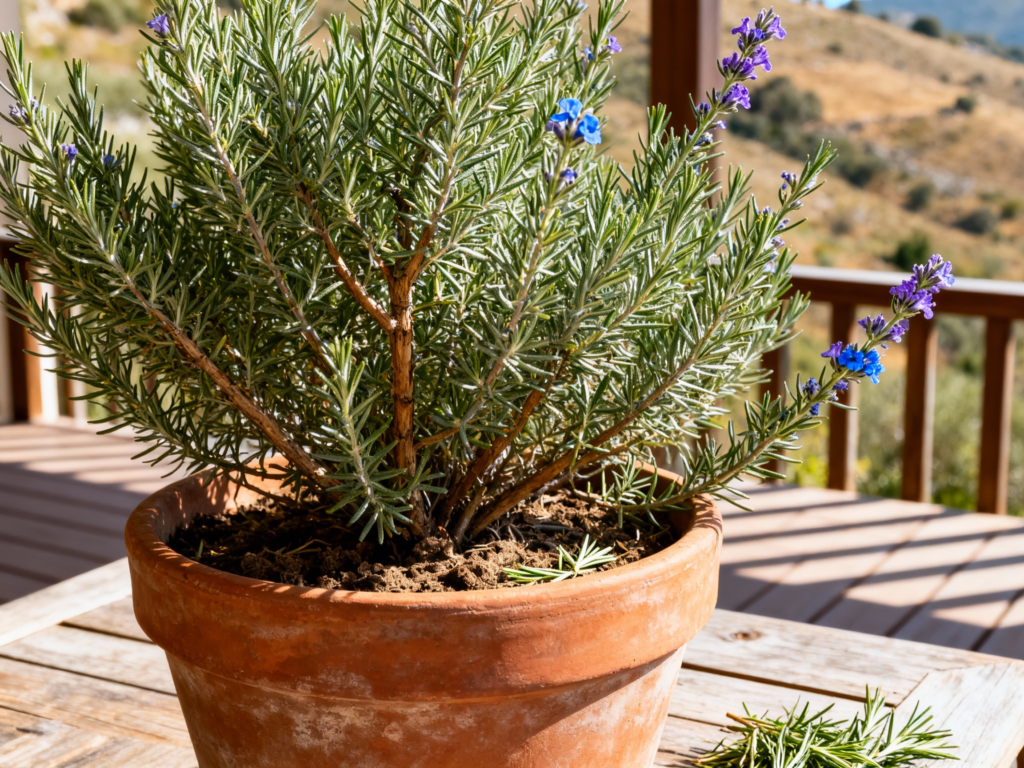
Rosemary is basically a tiny evergreen with flavor superpowers. It loves heat, hates wet feet, and makes roasted potatoes taste like a rustic vacation.
- Water: Let soil dry a bit between waterings.
- Container tip: Terra-cotta pots help prevent sogginess.
- Bonus: It’s drought-tolerant and smells like a Mediterranean hillside.Not mad about that.
Thyme
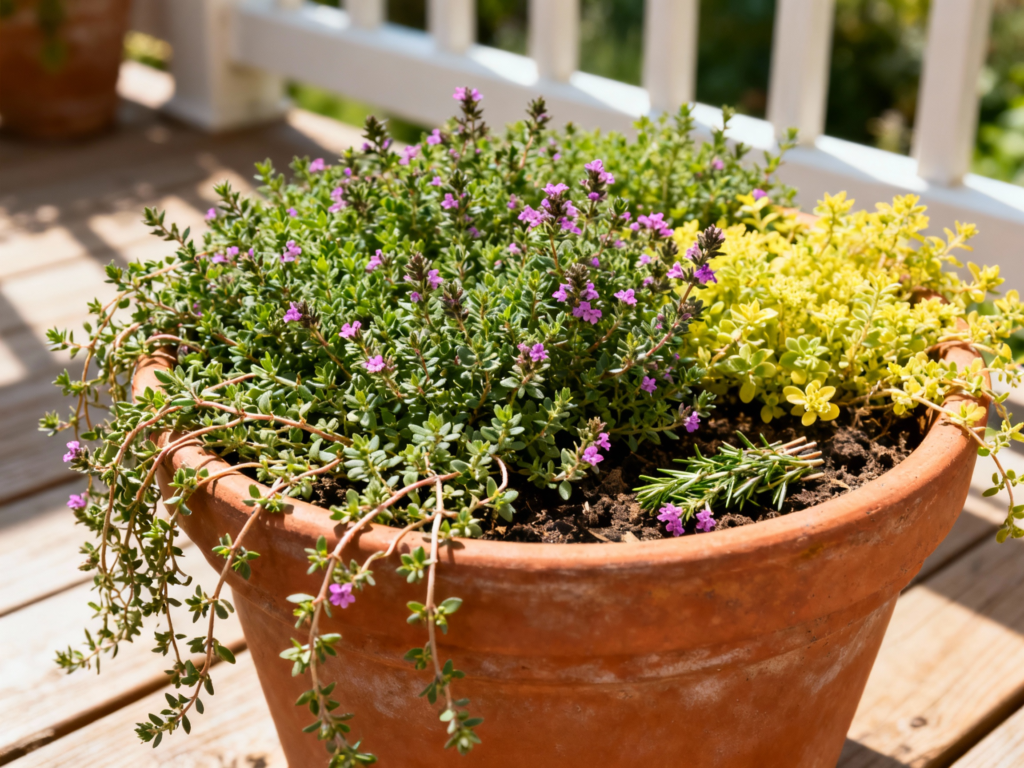
Thyme thrives on neglect. It stays compact, handles drought, and brings a woodsy, lemony note to meats and veggies. Plus it looks cute spilling over pot edges.
- Water: Light and infrequent.Overwatering = no thanks.
- Varieties: English, lemon thyme (top-tier for fish and vinaigrettes).
- Harvest: Snip sprigs as needed; it rebounds quickly.
Oregano
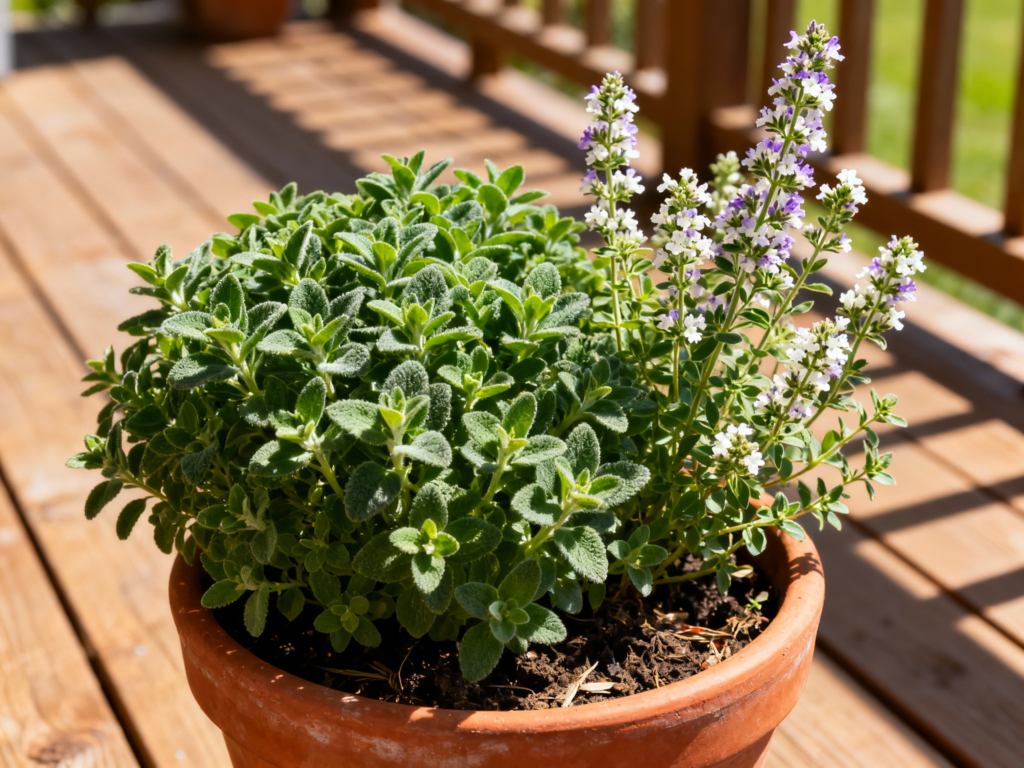
If you love pizza, grow oregano. It’s assertive, earthy, and thrives in hot sun. It can take over, so a dedicated pot is IMO a smart move.
- Water: Moderate; keep on the dry side.
- Flavor tip: Fresh oregano packs a punch.Start with less than you think.
- Best use: Tomato sauces, grilled meats, salad dressings.
Sage
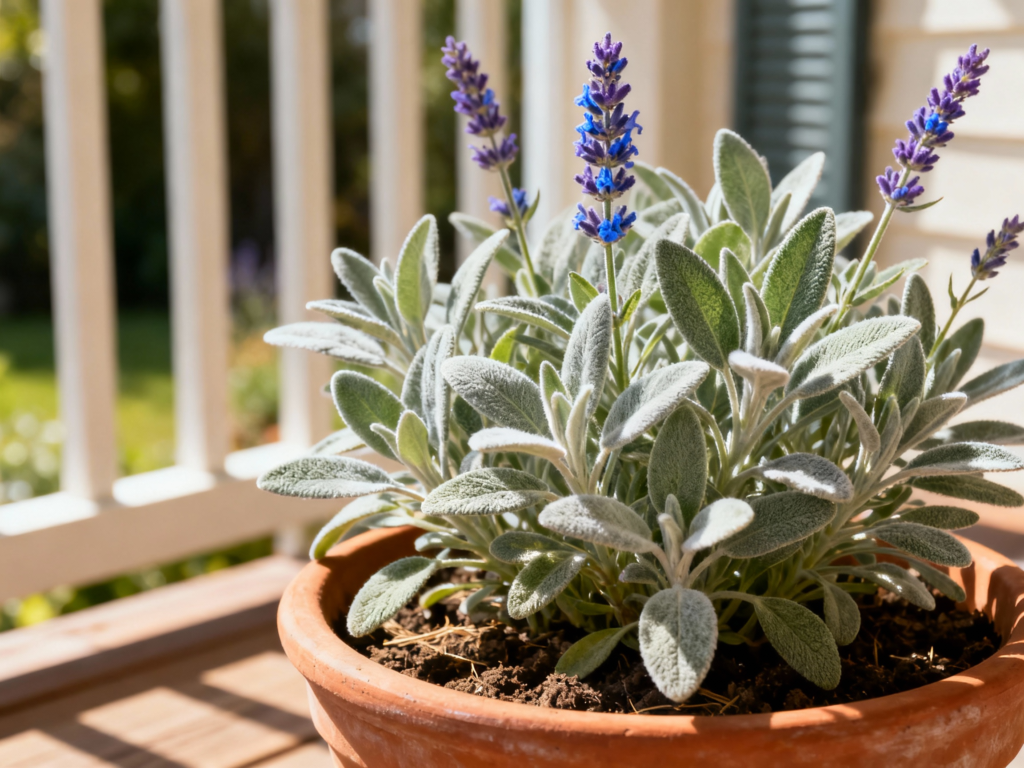
Sage brings cozy, savory depth to everything. It loves sun and airflow and looks gorgeous with silvery leaves.
- Water: Let soil dry between sips.
- Harvest: Pick older outer leaves first.
- Try this: Brown butter + crispy sage on pasta or squash = chef’s kiss.
Herbs That Tolerate Part Shade
Not every porch gets full sun. These herbs stay happy with a few hours of morning light or bright indirect light.
Mint
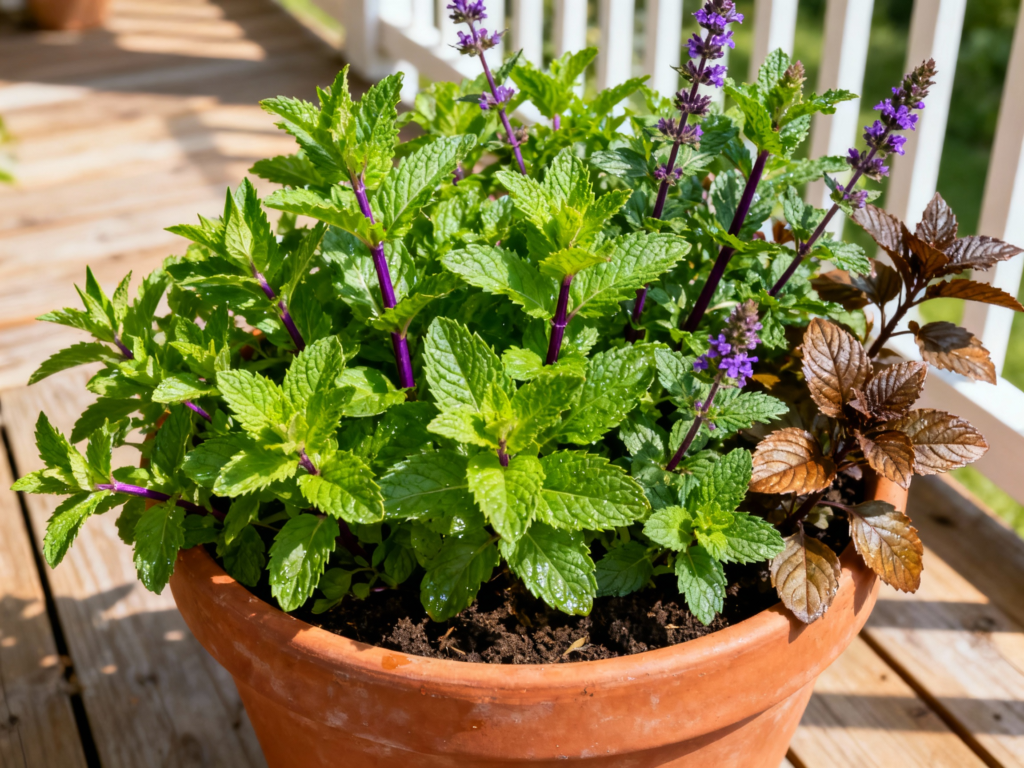
Mint grows like it has plans to rule the world.
Keep it in its own pot unless you want mint in your basil, rosemary, and…shoe rack. It thrives in part shade and moist soil.
- Water: Keep evenly moist.
- Varieties: Spearmint for mojitos, peppermint for tea, chocolate mint for dessert vibes.
- Use: Drinks, salads, yogurt sauces, fruit.
Parsley
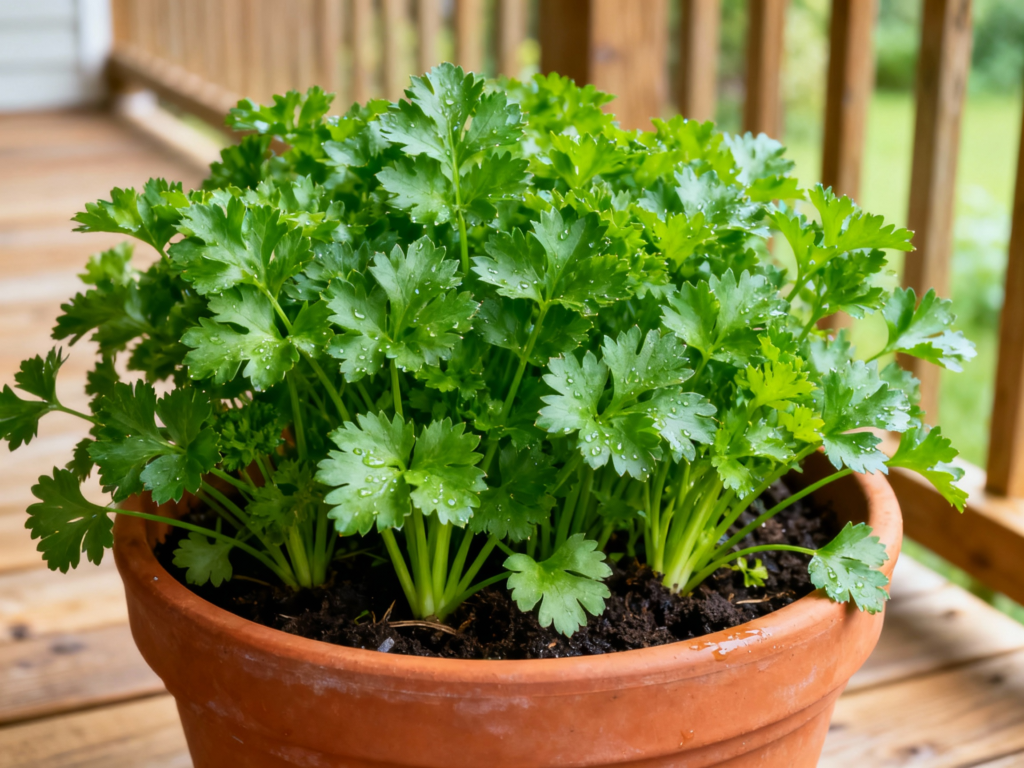
Parsley is more than a garnish. Flat-leaf parsley brings fresh, clean flavor to just about everything, and it tolerates cooler temps and less sun.
- Water: Consistent moisture, not soggy.
- Bonus: Packed with vitamins and brightens heavy dishes.
- FYI: It grows slower at first, then suddenly you have a forest.
Cilantro
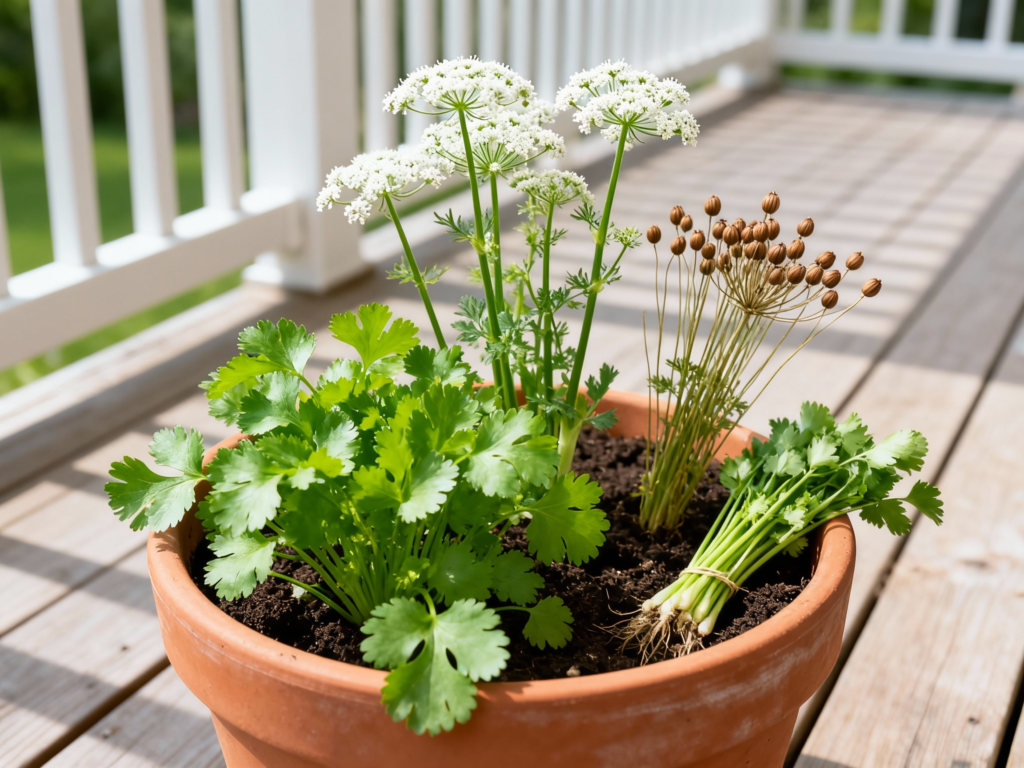
Yes, cilantro is divisive.
If you’re team cilantro, grow it in cooler weather or part shade to prevent bolting. It matures fast, so sow seeds every few weeks for a steady supply.
- Water: Keep evenly moist.
- Trick: Harvest often; use stems too for extra flavor.
- Bonus round: Let it bolt and collect coriander seeds—two herbs, one plant.
Chives
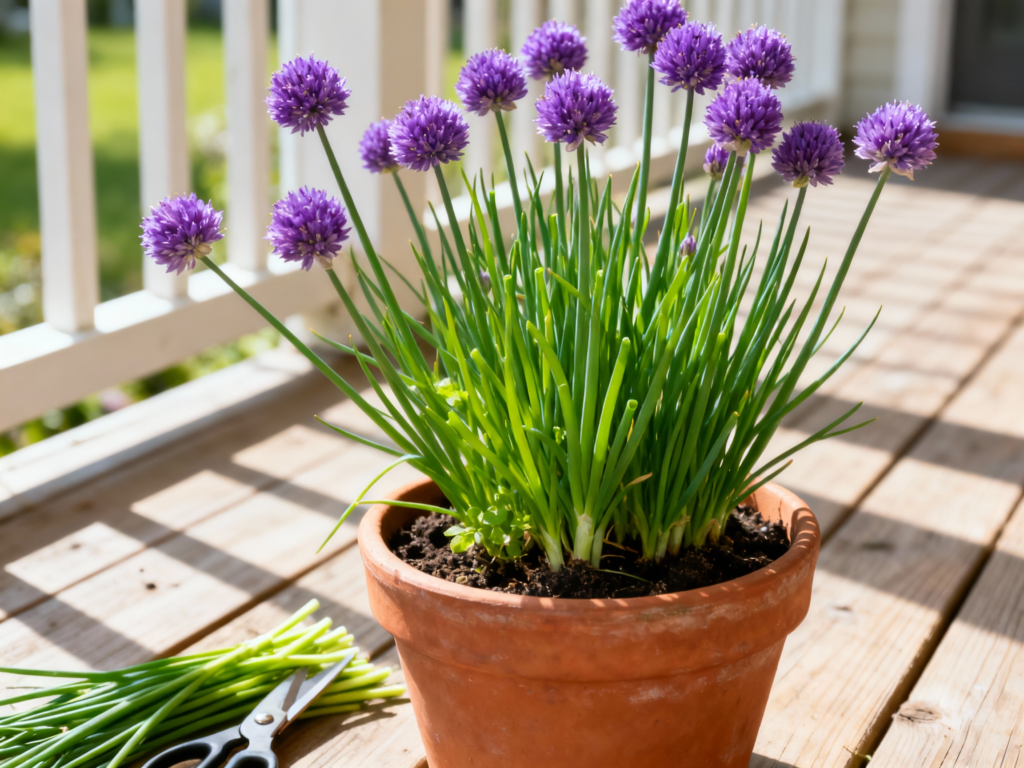
Chives are the easiest yes. They’re perennial, mild, and oniony, and they throw cute edible purple flowers.
Add to eggs, potatoes, and dips for instant flair.
- Water: Moderate, keep from drying out completely.
- Cut-back tip: Shear with scissors to encourage fresh growth.
- Flavor: Gentle onion with a grassy note—plays well with others.
Bonus Herb Worth the Pot Space
Bay Laurel
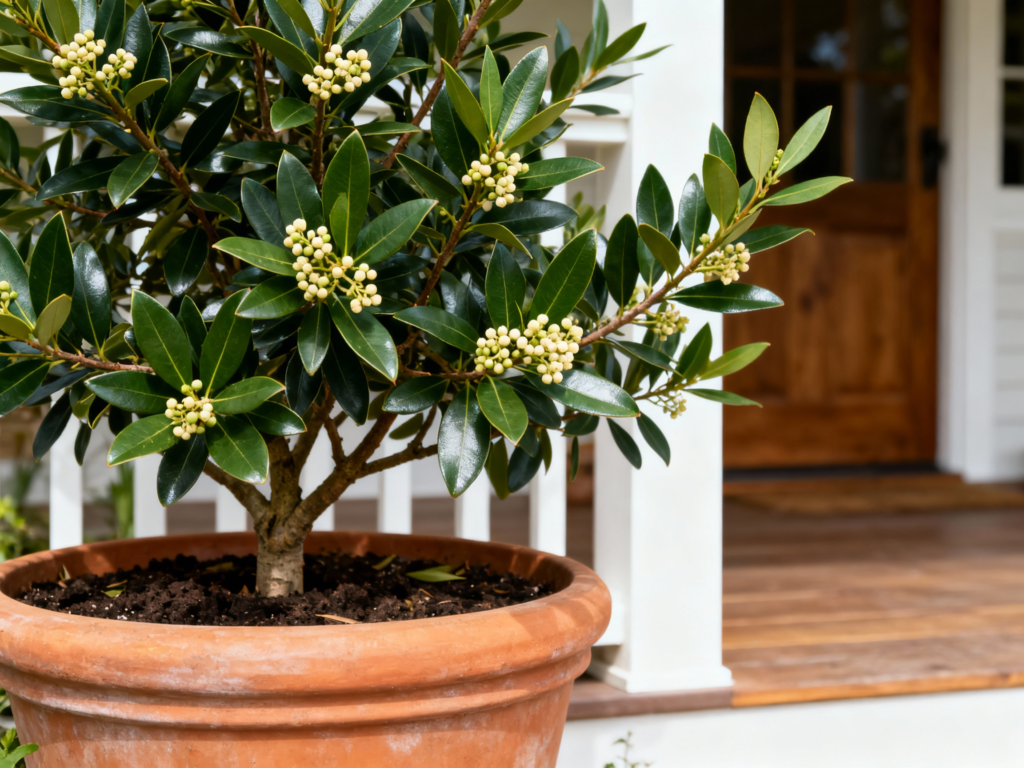
Bay leaves feel “extra,” but one small potted bay tree = a lifetime of soups and stews. It likes bright light, tolerates pruning, and looks elegant.
- Water: Even moisture, good drainage.
- Harvest: Use mature, leathery leaves; they’re more aromatic.
- Overwintering: Bring inside if winters get frosty.
Space-Saving Tricks for Small Porches
Short on square footage? Same.
Stack your herbs vertically and use multipurpose containers.
- Go vertical: Hanging baskets, wall pockets, or a tiered plant stand.
- Companion pots: Pair herbs with similar needs (basil + parsley; rosemary + thyme + sage).
- Right-size pots: 8–12 inches for most, larger for woody herbs like rosemary or bay.
- Rotate: Turn pots weekly for even growth, especially if your light comes from one direction.
Feeding and Maintenance
Herbs don’t ask for much, but they do appreciate a snack. Use a light hand—too much fertilizer kills flavor.
- Fertilizer: Diluted liquid feed every 3–4 weeks during active growth.
- Grooming: Pinch flower buds on basil, mint, and oregano to keep leaves tasty.
- Pest patrol: Check undersides of leaves; treat aphids with a gentle soap spray.
How to Harvest Like a Pro
Harvesting the right way gives you more growth and better flavor. Timing and technique matter—just a little.
- Morning harvest: Snip after dew dries for peak oils and crisp leaves.
- Never scalp: Take no more than one-third of a plant at a time.
- Cut above nodes: Especially for basil and mint—new shoots will branch out.
- Use sharp scissors: Clean cuts reduce stress and disease risk.
Quick Ideas to Use Your Porch Herbs
- Five-minute pesto: Basil, garlic, nuts, Parm, olive oil, salt.Boom.
- Herb butter: Mash soft butter with rosemary, thyme, and chives. Freeze in logs.
- Chimichurri: Parsley, oregano, garlic, chili, vinegar, olive oil. Drizzle on everything.
- Minty yogurt sauce: Mint, lemon, garlic, Greek yogurt.Great on grilled veggies.
- Infused oil: Gently warm olive oil with sage or thyme; cool and bottle.
FAQ
How often should I water porch herbs?
Stick your finger in the soil. If the top inch feels dry, water thoroughly until it drains. In hot, windy weather you’ll water more often.
Mediterranean herbs like rosemary, thyme, and oregano prefer to dry out a bit between waterings.
Can I grow herbs on a shady porch?
Yes, with the right picks. Go for mint, parsley, cilantro, and chives. They’ll handle part shade or bright indirect light.
Basil may sulk without at least a few hours of direct sun, FYI.
Do I need to fertilize?
Lightly. Use a diluted balanced liquid fertilizer every 3–4 weeks during growing season. Too much nitrogen makes lush leaves with weaker flavor—great for houseplants, not great for your pesto.
Why does my basil keep flowering?
Heat and maturity trigger flowering.
Pinch off buds as soon as they appear and harvest frequently. If it keeps bolting, plant a new batch—basil grows fast, and fresh plants taste better IMO.
What size pots work best?
Most soft herbs do well in 8–10 inch pots. Woody herbs like rosemary and bay appreciate 12–16 inch containers as they mature.
Always prioritize drainage holes and a light potting mix.
Can I bring my herbs indoors for winter?
Absolutely. Move them gradually to brighter indoor spots, trim lightly, and reduce watering. Bay, rosemary, thyme, and chives transition well.
Basil can go indoors too, but it needs strong light to stay happy.
Conclusion
With a handful of pots and the right plants, your porch can become a flavor factory. Start with ten heroes—basil, rosemary, thyme, oregano, sage, mint, parsley, cilantro, chives, and bay—and you’ll cook better without trying harder. Snip often, water smart, and enjoy the bragging rights when your dinner tastes like you hired a private chef.
Honestly? The porch garden glow-up is worth it for the smell alone.
